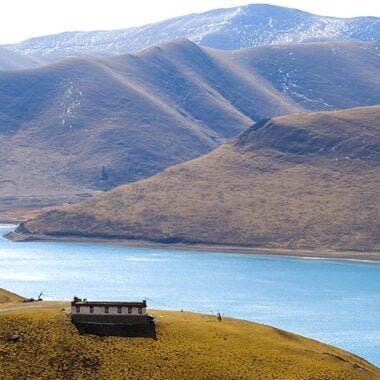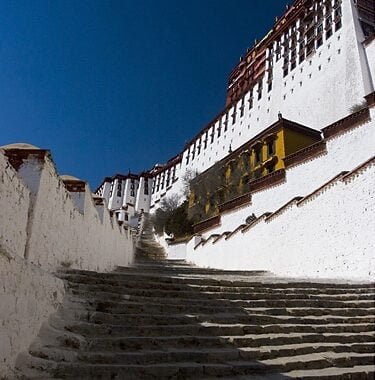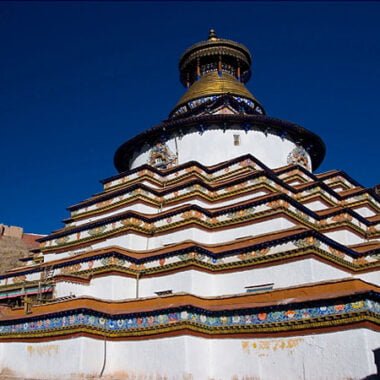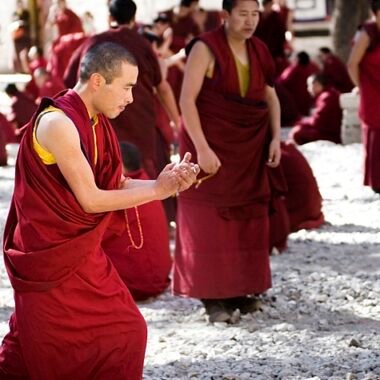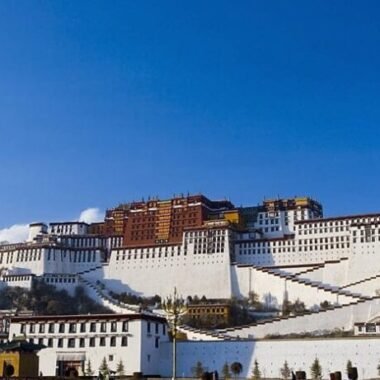Yamdrok Lake: Your Guide to the Kamba La Pass Vista
Introduction At 4,441 meters above sea level, Kamba La Pass is a gateway to heaven on Earth. As your vehicle crests the…
Introduction
At 4,441 meters above sea level, Kamba La Pass is a gateway to heaven on Earth. As your vehicle crests the wind-whipped summit, the world suddenly opens into a panorama of ice-capped peaks, emerald valleys, and Yamdrok Lake—a liquid sapphire cradled by the Himalayas. Tibetans revere this lake as a goddess’s tear; travelers call it soul-stirring. Here’s how to experience its magic mindfully.
Yamdrok Lake: A Sacred Symphony of Blue
– Spiritual Significance: One of Tibet’s three holiest lakes, believed to embody the goddess Dorje Gegkyi Tso.
– Natural Wonder: Formed by glacial erosion, spanning 675 km² with serpentine shores resembling coral branches.
– Survival Lifeline: Waters irrigate valleys below, sustaining barley fields and nomadic herds.
The Kamba La Pass Vista: A Moment That Stops Time
First Glimpse: The Heart-Skip Scene
Your ears pop as the road spirals upward. Suddenly, the pass unfolds—a dizzying viewpoint where prayer flags snap like celestial applause. Below, Yamdrok Lake shimmers in shades you’ve never seen: turquoise melting into cobalt, streaked with silver where clouds graze the surface. To the west, the Nojin Kangtsang glacier (7,191m) looms, its icy fangs biting the sky.
Light’s Dance: Colors That Defy Logic
– Morning (8–10 AM): Sunlight ignites the lake into neon turquoise, mirroring snow on distant Mount Donang Sangwari.
– Midday (12–2 PM): Winds riffle the water into a million sequins; shadows carve valleys like wrinkles on a wise face.
– Sunset (6–8 PM): The lake blushes rose-gold, while nomad tents along the shore glow like fireflies.
Soundtrack of the Pass
– Wind’s Chant: Whistling through fluttering prayer flags inscribed with mantras.
– Sheep Bells: Distant clinks from flocks grazing on thyme-scented slopes.
– Silent Awe: The collective gasp of travelers stepping out of cars, cameras forgotten.
How to Honor Yamdrok’s Sacredness
1. No Swimming or Wading: Tibetans believe disturbing the water angers the goddess.
2. Respect Prayer Sites: Don’t touch stacked mani stones or coin offerings at the viewpoint.
3. Leave No Trace: Pack out all trash—even biodegradable items disrupt fragile ecosystems.
4. Silent Reflection: Sit quietly for 5 minutes; locals say the lake “speaks” to those who listen.
Capturing the Perfect Shot
– Wide-Angle Wins: Use a 16–35mm lens to frame the lake’s curves with surrounding peaks.
– Polarizer Magic: Cut glare and deepen blues (9–11 AM light is ideal).
– Human Element: Include a local in traditional dress for scale and storytelling.
Practical Tips for the Journey
– Altitude Prep: Kamba La Pass is 4,441m—acclimatize 2 days in Lhasa (3,650m) first.
– Dress Smart: Layer with a windproof jacket; temperatures swing from 15°C to -5°C.
– Transport: Hire a Lhasa driver (¥800/day) or join a group tour (¥300/person).
– Best Time: May–June (wildflowers) or September–October (clear skies).
A Local Secret: The Nomad Encounter
Walk 10 minutes downhill from the viewpoint to a nomad tent. For ¥20, sip yak butter tea with Tsering, a herder whose family has camped here for generations. Her sun-cracked hands will show you how to toss tsampa (roasted barley flour) as an offering to the lake.
Why Yamdrok Stays in Your Soul
Yamdrok isn’t just a lake—it’s a mirror reflecting the sky’s moods, a testament to nature’s artistry, and a humbling reminder of our smallness in the Himalayas’ embrace. As you descend the pass, the lake’s image lingers like a phantom, urging you to return.
Relevant Articles:
- Lungmar Lake Park: Lhasa’s Secret Garden for Altitude Acclimation & Serenity
- A Sacred Journey to the Potala Palace: How to Visit with Respect & Reverence
- Jokhang Temple in Tibet: History, Culture & Sacred Moments
- Discover the Majestic Attractions of Tibet

